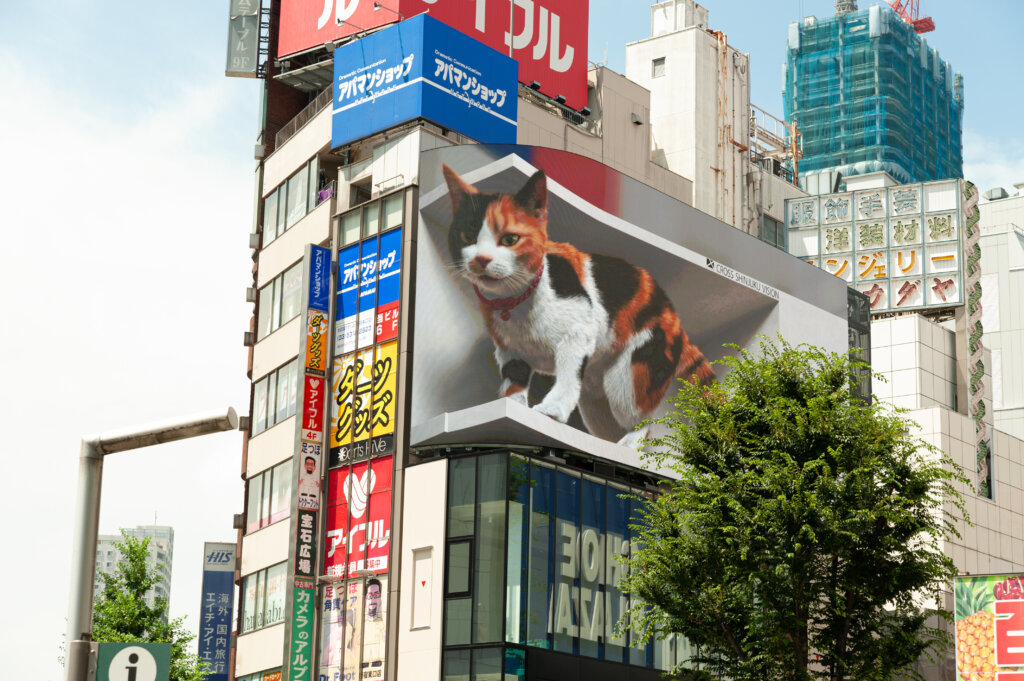The dawn of the digital age has revolutionized how businesses promote themselves and their goods, transforming traditional approaches to marketing forever.
With the introduction of cutting-edge technologies like social media and augmented reality, marketers now have many possibilities to captivate their target market in unique ways.
For a truly immersive advertising experience that engages viewers more profoundly than ever before, 3D advertising is the newest technological breakthrough.
In this article, we will explore how 3D marketing can be utilized by businesses to create powerful campaigns that capture attention and drive sales. We will also discuss the impact it is having on the industry as well as its potential for growth in the future.
What is 3D Advertising?
Unlike mundane ads, 3D advertising attracts the attention of your target audience with an immersive experience. Utilizing cutting-edge three-dimensional technology, this captivating digital marketing strategy stimulates potential customers and helps you stand out from the competition.
One example of 3D advertising is holograms, which use light to create a three-dimensional image that appears to float in mid-air. Another example is virtual reality, which allows users to interact with a simulated environment in real time.
But why should businesses consider using 3D advertising?
For one, it provides a unique and memorable customer experience that can help increase brand awareness and engagement. Additionally, 3D ads can be more effective at conveying complex information or showcasing products in ways traditional ads cannot.
The Impact of 3D Advertising
3D advertising has revolutionized how businesses advertise their products. It allows marketers to create a more interactive and immersive experience that engages customers in ways traditional marketing cannot.
Furthermore, 3D ads are more effective at conveying complex messages or showcasing products, which can be especially beneficial when promoting higher-priced items such as cars, electronics, or furniture.
Finally, 3D ads also offer businesses ways to create a more personal connection with their target market by allowing them to customize the content according to their needs and preferences. This can be particularly useful for small businesses looking to build customer relationships to maintain loyalty and increase repeat business.
The Future of 3D Advertising
As technology evolves, more businesses are expected to incorporate 3D advertising into their marketing strategies. This is due to its ability to provide a unique and memorable customer experience that can help engage potential customers in ways traditional ads cannot.
Moreover, with the introduction of virtual reality, businesses can now create a fully immersive environment for their customers. This will further revolutionize the marketing industry and open up countless possibilities for companies to reach out to their target audiences in unforgettable ways.
3D advertising is rapidly transforming how businesses promote themselves and their products. It provides an interactive experience that allows marketers to capture customer attention and drive sales. As its popularity continues to rise, businesses should explore how they can utilize 3D ads as part of their marketing strategy to stay ahead of the competition.
Case Studies: Successful Implementations of 3D Advertising
Are you interested in learning about successful implementations of 3D advertising? Look no further! We have compiled a list of case studies that showcase the power and effectiveness of 3D advertising.
Coca-Cola Creates 3D Designs in Days with Substance 3D
Coca-Cola is a global brand using Substance 3D to create digital designs for the physical world. With the help of Adobe Creative Cloud for enterprise, they were able to create stunning 3D designs in just days. This allowed them to bring their ideas to life quickly and efficiently.
R3D Uses Single NXE 400 Printer to Manufacture 18,000 Parts
R3D used their single NXE 400 3D printer to manufacture over 18,000 parts for 1,000 police cars in just one year. Using this innovative technology, they used over 330 liters of resin and saved time and money.
Realfiction’s Partner Case Studies Show ROI for Using Holographic Displays
Realfiction’s partner case studies show how holographic displays can be used for product launches and POS applications. These case studies also demonstrate the return on investment (ROI) that can be achieved by using this technology.
These case studies are just a few examples of how companies successfully implement 3D advertising. By embracing this technology, businesses can create engaging and visually stunning campaigns that capture the attention of their target audience. So why not consider incorporating it into your next marketing strategy?
Challenges with Implementing 3D Advertising
An advertising campaign using 3D technology presents a range of difficulties not experienced when utilizing other digital marketing methods.
Designing three-dimensional visuals for advertisements can be a daunting undertaking. Even though numerous tools are accessible to create fundamental 3D models, producing custom or intricate designs necessitates an experienced and proficient artist who can precisely show the desired feel and look of a product or service.
This can be both time-consuming and expensive.
Another challenge is the cost of delivering 3D ads to users on different platforms. As most 3D ads require additional rendering, this adds to the delivery cost, which can be prohibitive for some businesses. Furthermore, as 3D advertisements are not yet widely available, there is a lack of infrastructure to support this format.
Finally, creating ads suitable for 3D viewing can be difficult due to the added complexity of designing and rendering 3D advertisements. Ads must have a wide enough field of view to display their content properly and should employ techniques such as the stereoscopic view to provide a more immersive experience.
Due to these challenges, it is important for businesses looking to implement 3D advertising to have the right resources and infrastructure in place to make the most out of this format.
An experienced team of designers and developers who understand the intricacies of creating 3D ads will be essential for engaging and effective 3D advertising campaigns. Additionally, businesses should carefully consider the cost of delivering these ads to ensure their campaigns are successful.
Final Thoughts
Overall, 3D advertising is an innovative way to engage with customers and revolutionize the marketing landscape.
While several unique challenges are associated with implementing this format, such as difficulty in creating three-dimensional graphics and delivering ads on different platforms, businesses can overcome them by having a skilled team of designers and developers who understand the intricacies of 3D advertisements.
With careful planning and consideration for cost implications, businesses can make the most out of their campaigns while providing a more immersive experience for viewers.
2Ultimately, 3D advertising can revolutionize digital marketing strategies if implemented correctly and effectively.
About The Author
Khalid Essam
Khalid is the Chief of Staff at AOK. He collaborates with a team of specialists to develop and implement successful digital campaigns, ensuring strategic alignment and optimal results. With strong leadership skills and a passion for innovation, Khalid drives AOK’s success by staying ahead of industry trends and fostering strong client and team relationships.






